Completed project
Opening up the Levern Water for migratory fish, improving the river’s physical condition and ecological status.
Introduction
Crossmill Weir was the last remaining barrier to migratory fish on the Levern Water, which passes through Barrhead near Glasgow.
East Renfrewshire Council, Green Action Trust, Scottish Environment Protection Agency (SEPA), with support from the local community and the Clyde River Foundation (CRF), formed a partnership to remove the weir and improve the physical condition and ecological status of the water course.
The project was made possible through funding from SEPA’s Water Environment Fund and the Open Rivers Programme, a Dutch grant giving foundation funded by Arcadia.


What was achieved
The project delivered multiple outcomes across these key areas:

Fish can now access an additional 4 km of good quality spawning habitat. This will also lead to greater diversity in the local ecosystem.

Water quality and flow have been improved and the reduction in silt deposition also reduces flooding risk.
Restoration of the water course to pre-industrial conditions has ignited local interest in nature and provided a positive environment for physical and mental health.
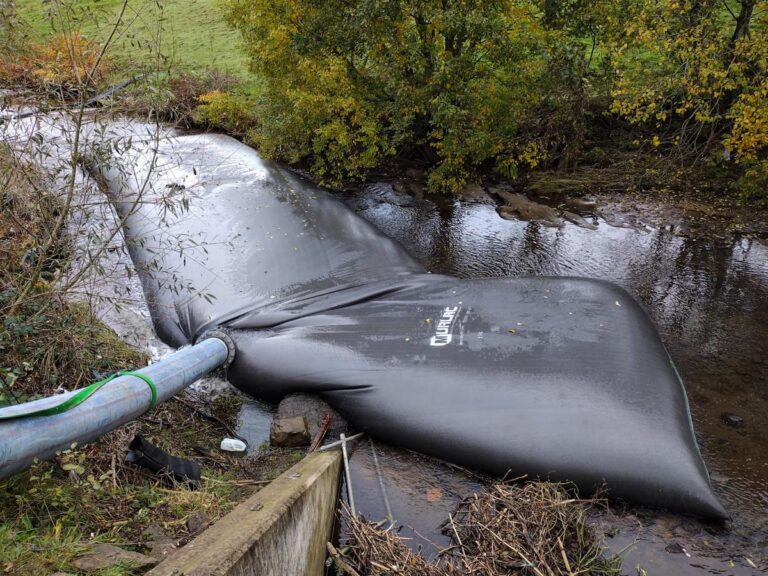
Crossmill Weir Removal was the final phase of a wider regeneration project to restore the Levern Water to pre-industrial conditions.
In addition to positive habitat and flood resilience outcomes, it has also reconnected the local community and school children with the river that runs through their town. It has reignited community interest in the watercourse and continues to be an educational resource for nearby schools.
Crossmill Weir was successfully removed in October 2023, opening up 4 km of good quality spawning habitat to migratory fish and restoring the physical condition and ecological status of the Levern Water from POOR to GOOD (as assessed by SEPA’s River Basin Management Plan).
The project was not without challenges, including delivery timescale slippage caused by the need to source additional funding. This had the knock-on impact of having to mitigate against the risk of carrying out dam demolition work in a river during a period of exceptionally high rainfall.
However all partners, government agencies, consultants and contractors worked together to ensure the project was delivered on time and on budget and delivered all the desired objectives.
SEPA and Clyde River Foundation will continue to survey and monitor the long-term impact of the project.
Crossmill Weir
To safely remove the weir, the entire flow of the Levern Water was diverted through a pipeline over land at a rate of 400 litres per second for two days. This allowed the excavator and work crews safe entry into the dry riverbed. The images below illustrate the key stages of the process.
The 1.9m high weir dammed the flow
To access 50m of riverbed
Breaking up sandstone blocks and concrete
Of over 20 tonnes of material
Creating a gentler riverbed slope
Flow restored

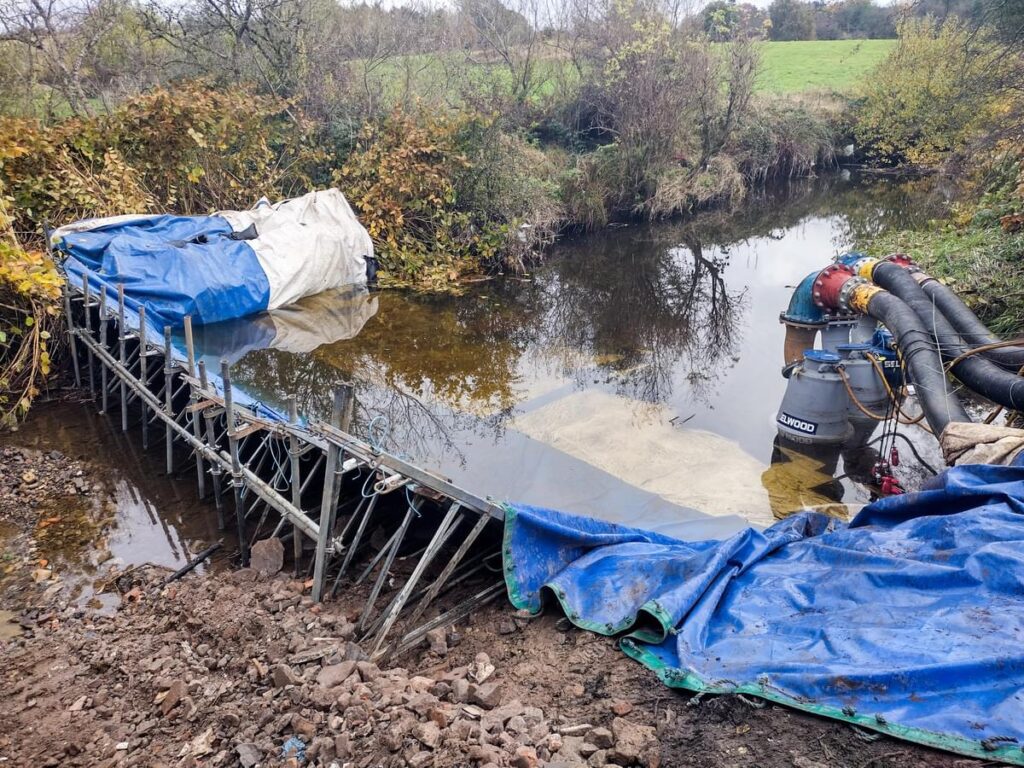
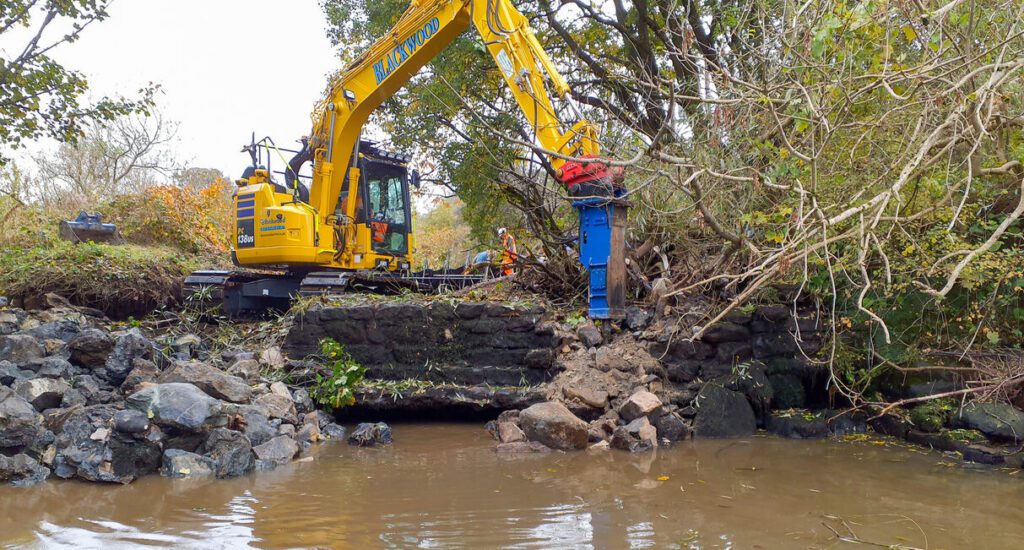
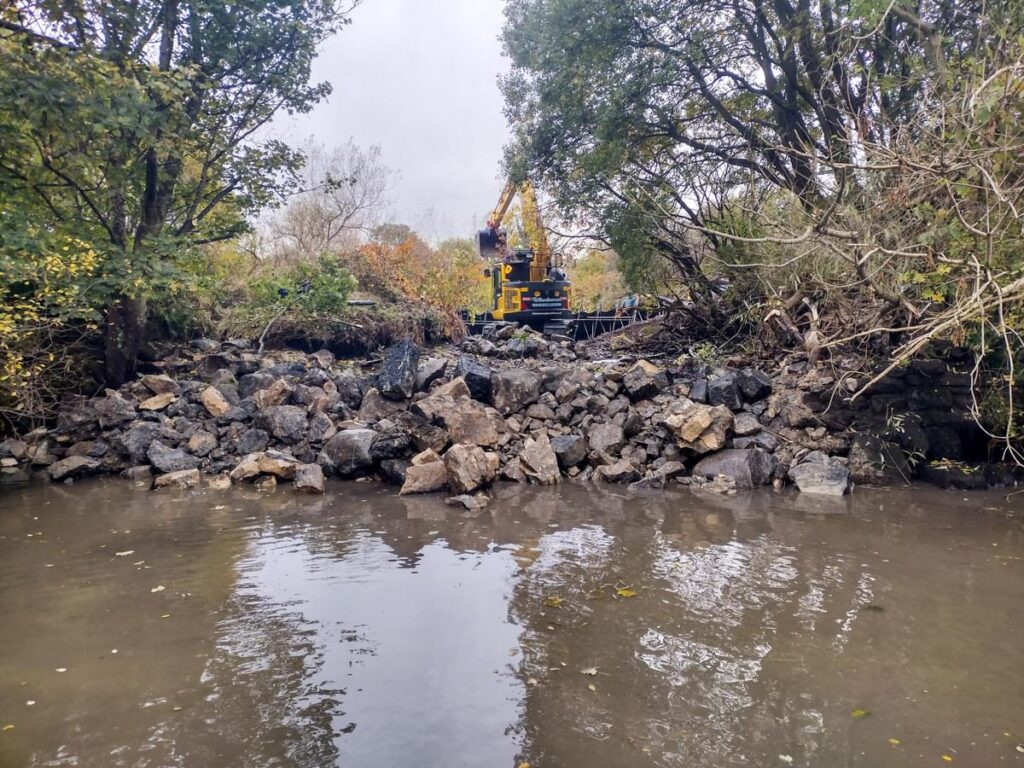
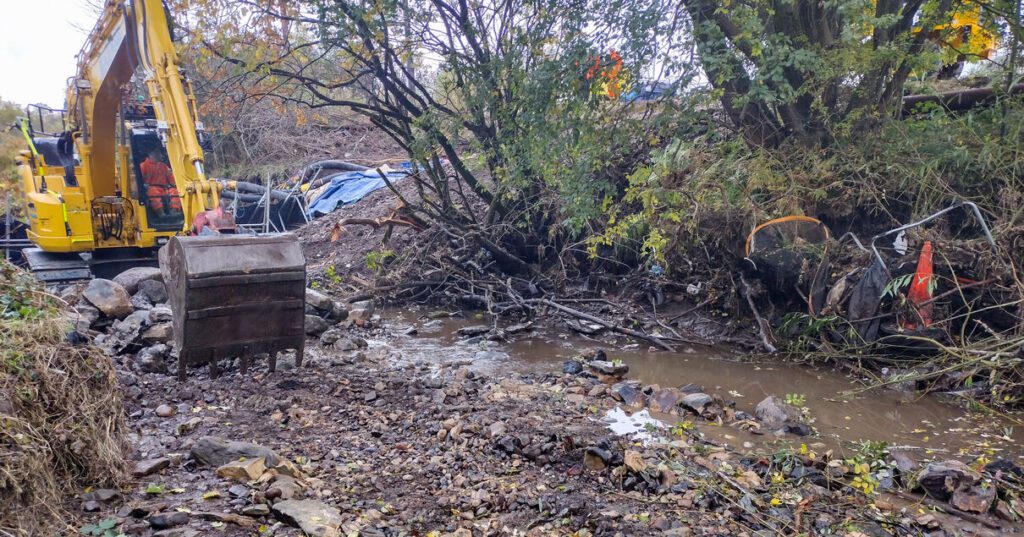

Crossmill Weir was constructed in around 1860 to power Crossmill Print Works. The small dam spanned approximately 10.5m across the river, with a 1.9m drop from the weir crest to the downstream riverbed. The weir was the last remaining barrier to migratory fish on the Levern Water, a small tributary of the White Cart River that flows into Glasgow.
According to Clyde River Foundation data, salmonids were present as far upstream as the weir. This indicates that the Levern Water downstream of the weir was already passable to fish and removal of this structure would open up a much longer reach of the river for fish to spawn.
While working on these habitat improvements, evidence of otters in the area was found. It is hoped that with more resilient stocks of fish in the river, these otters can flourish in the area and even expand their territory further upstream.
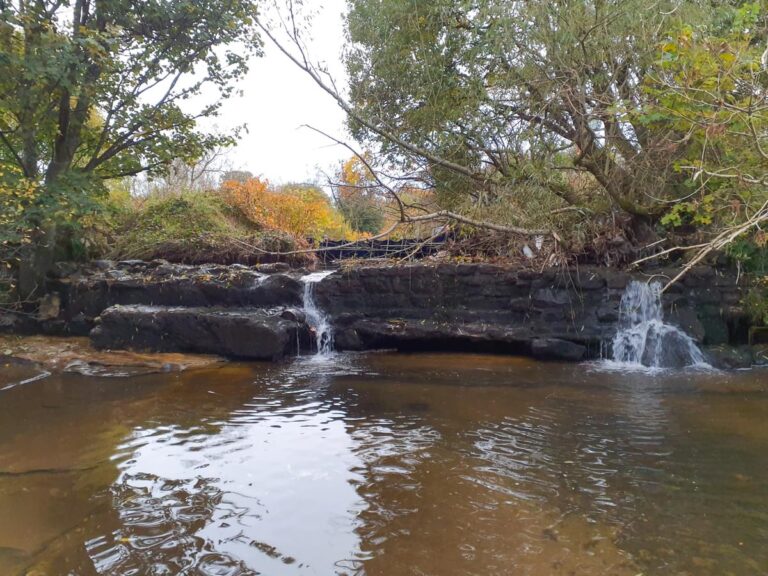
From feasibility studies to forests, grant management to greenspace, we can help to make your project a reality. It all starts with a conversation, so contact us now to get started.